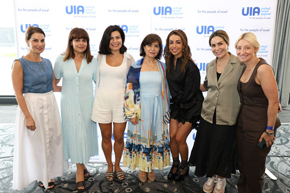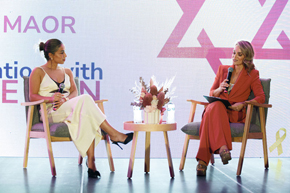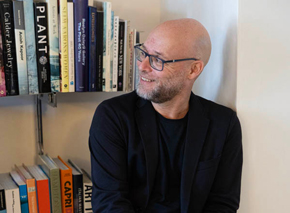From Australia’s Jewish Past: Joachim Matthias Wendt – Silversmith extraordinaire
Joachim was born on 26 June 1830 in Itzehoe, a small town in Holstein, Germany, which at the time was a Danish province.

Joachim Wendt
He was the son of Joachim and Christina. She died when Joachim was nine years of age. He was brought up by his father and two sisters and became apprenticed to a watchmaker and learned the silversmith’s craft. In 1848 Holstein was conquered by Prussia. He found German rule so unpleasant that he emigrated to South Australia, arriving at Port Adelaide in 1854 and establishing himself as J M Wendt – watchmaker and jeweller. He opened his first business in Pirie Street, moving on to bigger premises at 68 Rundle Street in 1861 and a further move to 70 Rundle Street in 1874. The business became an extremely successful and well-known one for over one hundred years.
He became an expert in his field, with the quality of his workmanship and design being recognised at the 1865 New Zealand Exhibition held in Dunedin, where his silverware and jewellery won first prize. The Duke of Edinburgh (Prince Albert) visited Adelaide in 1867 and Joachim’s company produced four presentation caskets for the visit. The Duke was so impressed that he commissioned further work and appointed Joachim ‘Jeweller to His Royal Highness’ in the colony of South Australia. The company staff had now expanded to include twelve silversmiths. In 1869 he expanded the business and opened a shop in Mount Gambier. On Christmas day that year, he married in his home ‘’Zetland’’ on North Terrace, Johanna Ohlmeyer, a widow with four children. The couple went on to have four children of their own.
Joachim’s silverwork included extravagant naturalistic creations, stylish Edwardian domestic designs and pieces which showed restrained Regency taste. There was a growing demand for the trophies and presentation pieces that the Wendt workshop produced in a mixture of English and European styles, increasingly ornamented with Australian motifs and ranging from the useful to the grandly symbolic.
 His first work was shown overseas at the London International Exhibition in 1862. By the end of the century, his work had been exhibited from New Zealand to Paris, and Philadelphia to London. The decade of the 1870s saw booming demand for silverwork, with the Wendt productions being exhibited on three continents and Joachim courting and using publicity at every turn for his business whilst avoiding it for himself. Among his important commissions was the salver (platter) presented to E M Young, a banker and financier in 1870 which is now exhibited in the National Gallery of Australia in Canberra. In 1878 Joachim submitted a pair of prize-winning epergnes (table centrepieces) to the Paris Universal Exhibition. His ongoing success encouraged him in 1888 to open a further store at Broken Hill. In 1892 Joachim was commissioned by the Board of BHP to make a presentation silver piece for the general manager. It was to be a model of the Block 10 Mine and he designed the model from photographs and was able to accurately reproduce the structure, in all its detail, including the surface buildings, shafts, tunnels and ore floors. The model was made of solid silver on an ebony base, and it took him six months to create. It is a rare remaining piece associated with the first major strike at Broken Hill. In 1901 he supervised the production of a silver casket and presented by the citizens of Adelaide to the Duke of York (later George V).
His first work was shown overseas at the London International Exhibition in 1862. By the end of the century, his work had been exhibited from New Zealand to Paris, and Philadelphia to London. The decade of the 1870s saw booming demand for silverwork, with the Wendt productions being exhibited on three continents and Joachim courting and using publicity at every turn for his business whilst avoiding it for himself. Among his important commissions was the salver (platter) presented to E M Young, a banker and financier in 1870 which is now exhibited in the National Gallery of Australia in Canberra. In 1878 Joachim submitted a pair of prize-winning epergnes (table centrepieces) to the Paris Universal Exhibition. His ongoing success encouraged him in 1888 to open a further store at Broken Hill. In 1892 Joachim was commissioned by the Board of BHP to make a presentation silver piece for the general manager. It was to be a model of the Block 10 Mine and he designed the model from photographs and was able to accurately reproduce the structure, in all its detail, including the surface buildings, shafts, tunnels and ore floors. The model was made of solid silver on an ebony base, and it took him six months to create. It is a rare remaining piece associated with the first major strike at Broken Hill. In 1901 he supervised the production of a silver casket and presented by the citizens of Adelaide to the Duke of York (later George V).
Looking for profitable investments, Joachim became a member, together with Saul Solomon, of the syndicates that built the Adelaide Arcade and which Joachim went on to be a part owner of the Theatre Royal in Hindley Street. He had many varied interests, and, by the turn of the century, he had joined a group – the Tintinara Land Syndicate (Tintinara district in the Murray and Mallee region of South-East South Australia) – which is credited with the discovery of the so-called 90-mile desert being not a barren waste, but by treatment with trace elements could become valuable arable land. He went on to develop 60,000 acres of this scrubland. He was part-owner and director of the Adelaide Crystal Ice Company, the Metropolitan Brick Company and the Triumph Plow Company. He built the Freemasons’ Hall in Flinders Street, invested in gold mines in South Australia and, as a completely different interest, he later studied Count Mattei’s system of homeopathy and treated many people.

A gold fob designed by Wendt
In 1903 Joachim’s son Julius and his stepson Hermann became partners in the company and took over the management of the stores and the company again moved in 1904 to 74 Rundle Street as was known as one of Adelaide’s most famous jewellery houses.
In an article published in 1904 in the South Australian Advertiser it stated that Wendts was credited with the reputation for creating:
…a modern establishment second to none in Australasia. It has conveniences for customers on an elaborate scale. The spacious frontage is ornamented with mosaic tiles, the semi-circular lead lights border a large clock over the entrance flanked by 12-foot sloping windows and the surrounding double-pressed brickwork is neatly tuck-pointed and finished in Portland cement – it is very elegant. At its best, it ranks with the finest produced in Australia in the second half of the nineteenth century.
Joachim was described as upright and honest, with heavy-lidded eyes, a trim beard and a sense of serenity. In his retirement, he received expressions of affection from his employees and tenants. Although he had been naturalised in 1864, he deflected anti-German sentiment during World War I by stressing his Danish origins and by praising the British Empire.
Joachim passed away on 7 September 1917 at his home “Eskbank” in Wakefield Street, Adelaide. Some of his most famous works of jewellery can be seen at the Art Gallery of South Australia, Tamworth Regional Gallery and the Powerhouse in Sydney as well as public and private works around the country. The Wendt’s fine quality work was put to excellent use when for the visit of Queen Elizabeth 11 and The Duke of Edinburgh in 1954, with a necklace and earrings being produced for the Queen, and a set of cufflinks for the Duke.
The company became Wendts Pty Ltd in 1947, with five generations of the family running the business until its closure at the end of the 1990s.
The AJHS acknowledges the following references in the preparation of this story:-
National Dictionary of Australia; Wikipedia; History Trust of South Australia; National Gallery of Australia; Graison’s Fine Jewellery Blog; South Australian Advertiser – 1904

The Australian Jewish Historical Society is the keeper of archives from the arrival of the First Fleet in 1788 right up to today. Whether you are searching for an academic resource, an event, a picture or an article, AJHS can help you find that piece of historical material. The AJHS welcomes your contributions to the archives. If you are a descendent of someone of interest with a story to tell, or you have memorabilia which might be of significance for the archives, please make contact via www.ajhs.com.au or its Facebook page.







